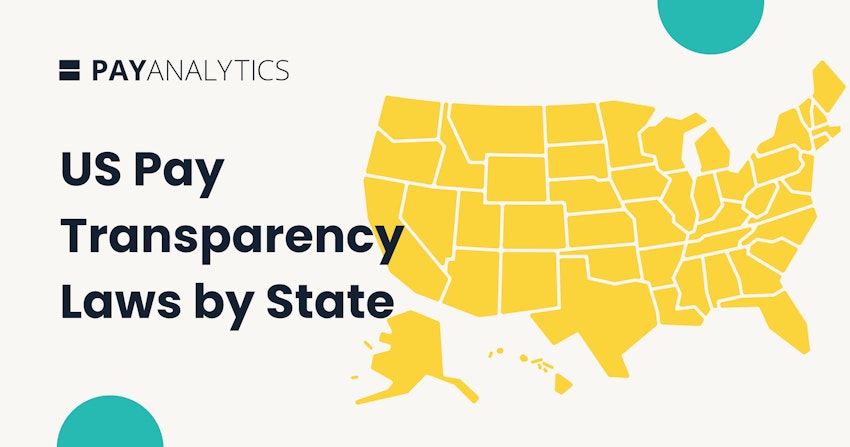What is pay transparency?
In many labor markets worldwide, employers keep pay information tightly under wraps. Employees are allowed to know their own salary, of course, but no one else’s. If employees start talking with each other about pay, employers often discourage this or flat-out ban it. This dynamic can be described as “pay secrecy,” and in many business sectors, it’s the status quo. As of 2018, almost half of all workers in the U.S. were either discouraged or prohibited from talking about pay.
There are a few reasons why pay secrecy has become the norm. For one, conventional wisdom holds that it prevents jealousy and resentment among employees, preserving team cohesion. It also keeps labor costs low: if an employee has no reference point for their pay, they’re less likely to ask for a raise. And pay secrecy spares managers, HR, and employees from difficult conversations or confrontations about pay.
However, pay secrecy also has huge drawbacks. In this environment, workers may feel that their hard work isn’t being noticed or rewarded. They might even suspect that their employer is taking advantage of employees. This can lead to a culture of mistrust, low morale, and constant employee turnover. Multiple studies have associated pay secrecy with lower performance. And sometimes, employees’ suspicions of unfairness turn out to be correct. Pay secrecy makes it easy for bias and pay discrimination to take root, even if the employer is trying not to discriminate.

The opposite of pay secrecy is pay transparency. This concept has been picking up steam in recent years, and you’ll often hear it in discussions on pay equity and related legislation. Pay transparency is the practice of openly sharing information about pay with employees. This generally means making salary data available to all employees.
The concept of pay transparency can include potential employees too. For instance, a pay transparency law might require employers to list salary ranges in job postings. Pay transparency can also extend to all types of compensation, like data about bonuses, commission, and benefits.
Benefits of pay transparency
Pay transparency sounds like a pretty employee-centric proposition—and indeed it is. Disclosing pay information can seem risky. What if employees pressure the company for raises that would damage its bottom line and long-term sustainability? However, many companies have found that pay transparency provides benefits that are worth the risks and costs. We’ll look at the main benefits in this article.
Pay transparency in the workplace leads to job satisfaction
A company implementing pay transparency first needs to make sure that its pay structure is fair. This may involve making some changes, like narrowing the gender pay gap or giving raises to underpaid workers. But when a company starts making these steps towards pay equity, employees are more likely to believe that they are paid fairly. Transparency also lets employees make external comparisons, evaluating their own salary and the company’s pay structure against market standards.
Pay range transparency improves employee performance
In a transparent company, employees know exactly why they are paid what they are paid. This also means that they know how they can move up in the pay scale. So they’re likely to put in extra effort to produce higher quality work, improve their metrics, or learn new skills.
This can be a boost to the organization’s overall performance. Over 80% of workers report that fair pay makes them more productive. This improved performance may help an organization become more competitive in its field, boosting its reputation and even profitability.

Pay transparency reduces pay discrimination
Unconscious bias is deeply ingrained in modern societies and therefore in our workplaces. So most of the time, pay discrimination—whether it’s based on gender, race, religion, nationality, or anything else—is not an intentional choice.
However, if someone else can see the decisions we make, we become more likely to double-check our work and make sure we are making the right call. We’re also more likely to set up and use clear and objective standards. This is why pay transparency reduces the chance of discriminatory salary decisions.
In addition to discrimination based on specific characteristics, pay transparency in the workplace reduces the possibility of discriminatory pay practices in general. For instance, one group of employees may be paid less than another even though the work intensity and qualifications are about equal. Transparency calls that status quo into question.
Pay transparency leads to trust and collaboration
When an employer is acting in good faith and takes steps towards pay equity, this communicates to employees that the employer is trustworthy. This is why pay transparency can improve the employer-employee relationship, increase employee loyalty, and improve morale.
Pay transparency can also foster trust and collaboration between employees because it makes people feel like they are on a level playing field. There’s less cause for jealousy, resentment, or rivalry, so employees are more likely to work together. These healthier workplace dynamics can have very real payoffs in terms of efficiency, productivity, and retention.
Pay transparency gives employers a recruitment advantage
Nobody likes “gotcha” tactics. In the climate of pay secrecy, many job postings advertise a “competitive salary” but offer no numbers to back up that statement. Applicants may invest hours applying and interviewing only to find out that the salary range is disappointingly low. At this point, the applicant often walks away (with a bad impression of the company). Or they might take the job, but they already have negative feelings about their new employer and are keeping an eye out for something better. This is a lose-lose situation.
In contrast, pay transparency in job postings signals that a potential employer is honest, trustworthy, and values their workers. This paints the picture of a company that people will want to work for. As a result, the company’s recruitment efforts attract well-qualified applicants and lead to great employer-employee matches. Pay transparency in job postings has even been found to provide a better return on advertising expenses, lowering cost-per-click by 35%.

Salary transparency laws and employer compliance
Motivated mostly to protect employees and job-seekers, many countries and regions have implemented or are developing pay transparency laws. For instance, in the U.S., the New York salary transparency laws require pay ranges in job postings. The same goes for the pay transparency law in California. Both laws also require employers to give pay range information to employees on request. In the E.U., a sweeping new pay transparency directive does much the same thing.
Employers are showing a wide range of responses to these laws. Some are noncompliant, risking reputational damage and sometimes fines to uphold the status quo of pay secrecy. Others are minimally compliant, printing out their pay ranges, storing them on a dusty shelf, and hoping that no employee will ever ask about them. Still others proactively adopt pay transparency: they take advantage of the new pay transparency requirements to catalyze positive change.
This proactive approach can lead to all kinds of organizational soul-searching. It may mean revisiting the pay structure. It could involve meetings to talk about what the organization really values in an employee and what skills and qualifications are valued in each job. (Many companies find that these factors change over time!) It might mean budgeting for raises and figuring out how to do a pay equity analysis. It could involve possibly unpleasant surprises about pay gaps and disparities. But in the end, proactive employers use pay transparency as a tool to become a better workplace and a stronger organization.
Even if there’s little chance of salary transparency laws in your area anytime soon, you can still reap the benefits we’ve been talking about. A sincere commitment to pay transparency will push your organization to do right by its employees, create a culture of trust and collaboration, improve performance, become more competitive in the marketplace, and attract and retain the best workers. This is why many companies have found that, sometimes counter to their expectations, pay transparency is a win-win.
Ready to discover more? We’ve got just the article for you.
We’ve written some articles on pay transparency, and we keep adding more all the time. Check out our resources at the links below:
- Our local requirements page is an up-to-date treasure trove of articles about pay equity and pay transparency laws around the world.
- We’ve compiled an all-in-one overview of pay transparency laws in U.S. states and cities.
- Here’s some information on some major U.S. job markets with pay transparency laws:
- Here’s some specific information about the E.U. pay transparency directive:
- Download our e-book on preparing for the EU directive.
- Find out more about pay gap correction.
- Find out how pay transparency helps close the gender pay gap.
Get pay transparent with PayAnalytics today
Our clients have also found PayAnalytics’ pay equity software instrumental in moving towards pay transparency.
PayAnalytics gives companies unique insight into their salary structure. With our data visualizations, you can get a bird’s-eye view of every employee in your organization and what they are paid. Then you can drill down for more detail at the employee level. This makes it easy to figure out where your pay structure is logical and consistent, where it needs work or adjustment, and which employees may be over- or underpaid based on their job role or other factors.
PayAnalytics was specifically developed to identify and correct pay disparities. It detects pay gaps based on gender or any other demographic criteria, and it calculates targeted raises to correct the disparities. To make sure that your pay equity journey won’t jeopardize your bottom line, these raise calculations can be set to stay within a certain budget or close pay gaps slowly over the course of years.
Developed by data scientists in collaboration with employers, PayAnalytics is both powerful and easy to use. It takes minimal setup time, and our video tutorials support you every step of the way.
Book some time with our pay and workplace equity experts to talk through your needs. We love to talk about the benefits of pay transparency.





